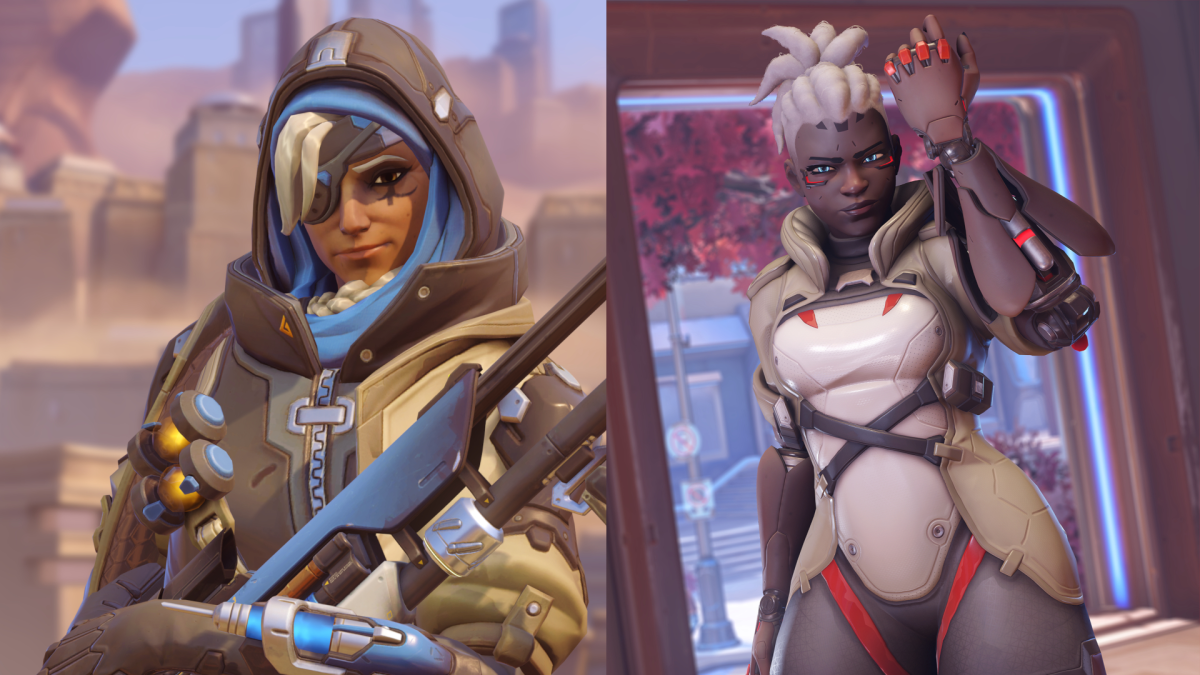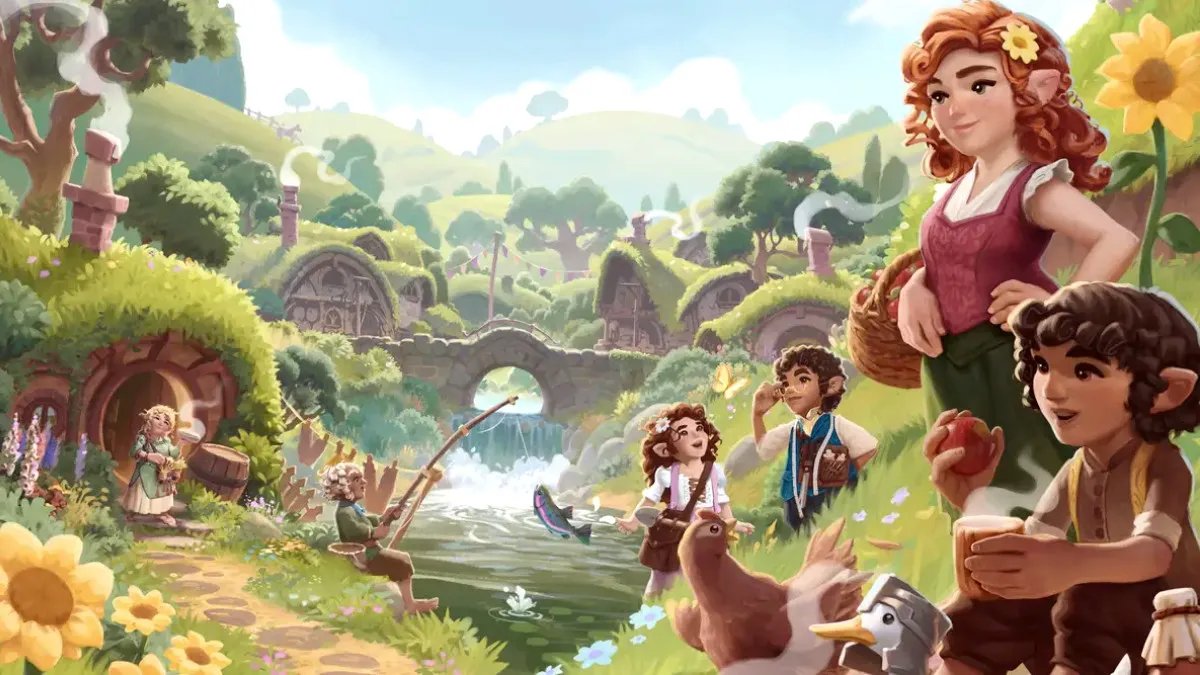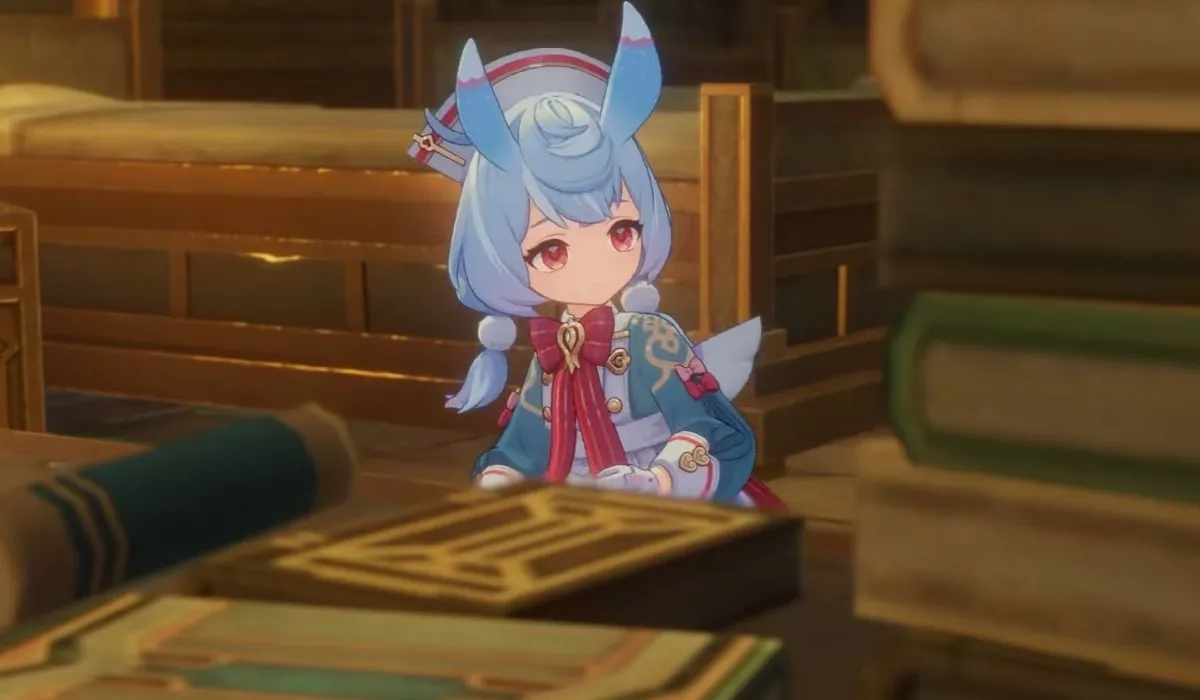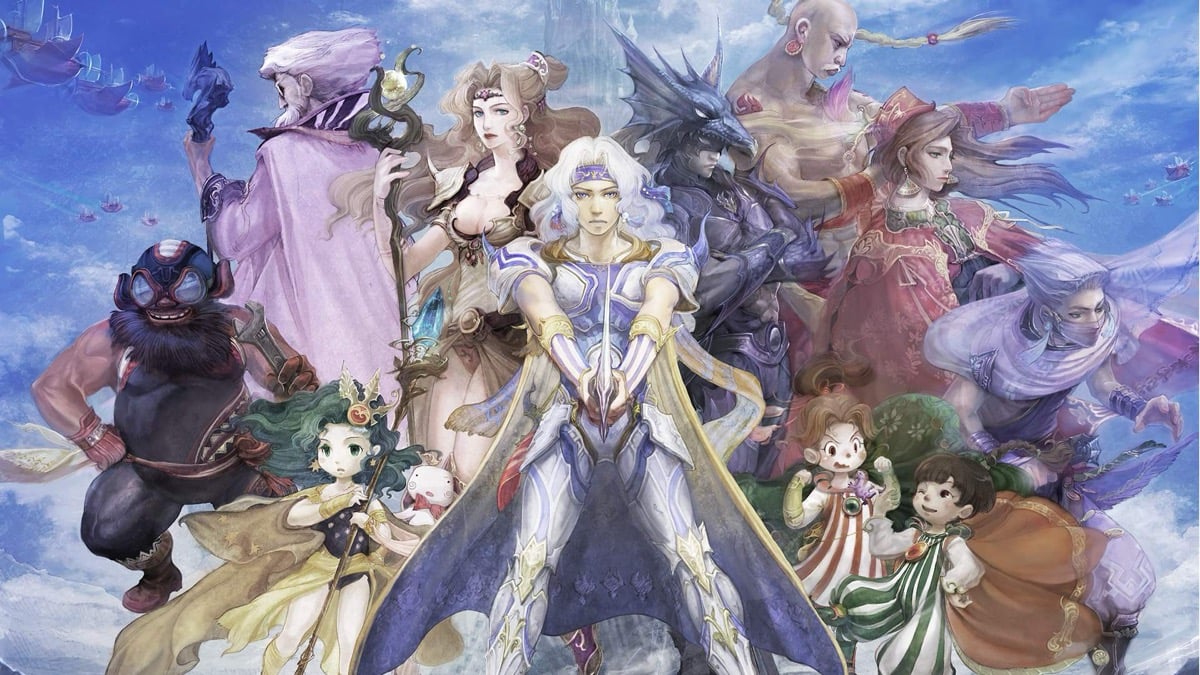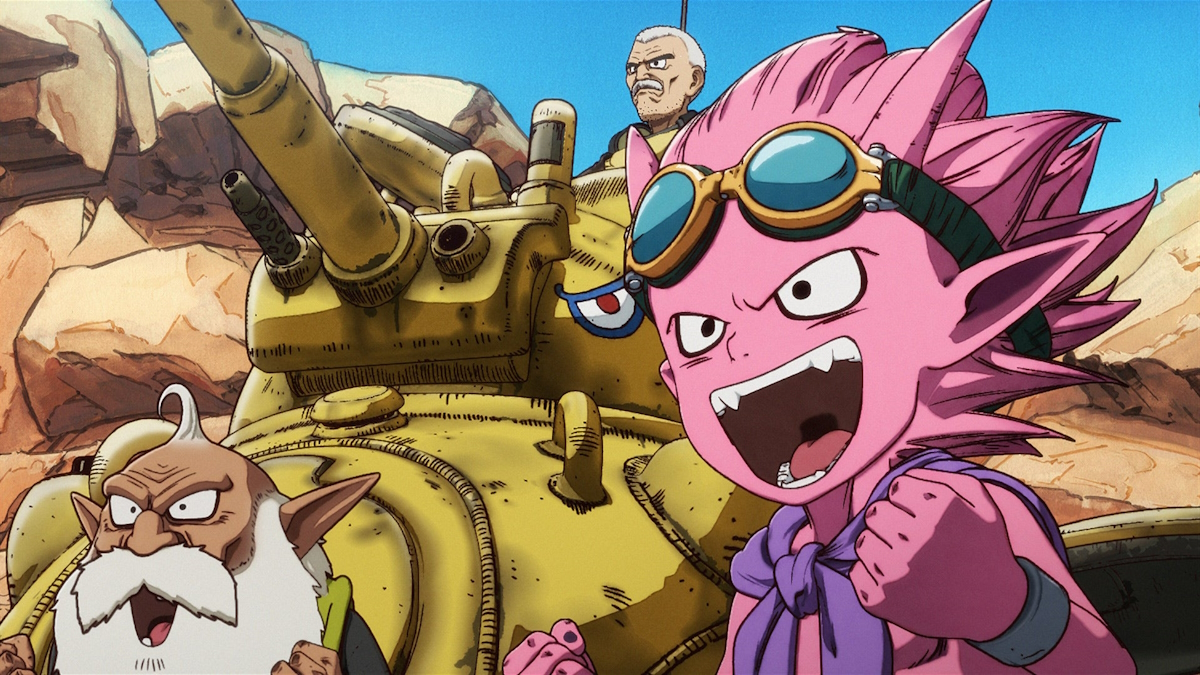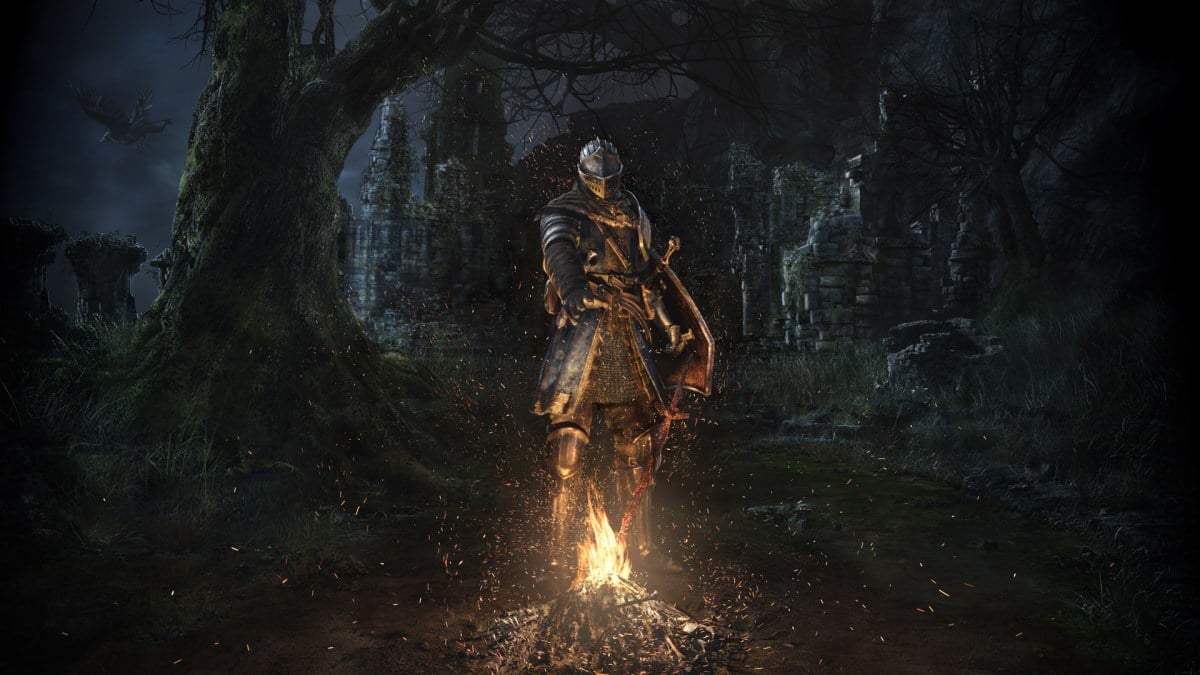Hero shooters are a dime a dozen these days, but when Blizzard launched Overwatch back in 2016, it was revolutionary for its time. Here was a shooter that combined class-based multiplayer gameplay with the kind of unique, specialty heroes seen in online battle arenas like Dota 2 and League of Legends. Easy to learn but difficult to master, Overwatch took off overnight. And like both League and Dota, its playable characters stole the show with their fantastic character designs and lovable, distinct personalities.
Early on, Overwatch received plenty of love for one of its most memorable features: Its robust cast of female characters. Overwatch 2, which premiered its PvP beta in late April, promises to build off this roster, with the game’s first Black female hero officially entering the battlefield: former Overwatch captain Sojourn.
However, it’s hard to get too excited over Overwatch 2. Activision Blizzard, the company behind the Overwatch franchise, has been embattled in incredibly egregious allegations of workplace sexual harassment and retaliation. This culminated in a widely reported lawsuit filed by California against the developer in July 2021, along with a slew of follow-up suits over labor practices and sexual harassment at the company. One lawsuit was filed as recently as March 2022.
The initial California lawsuit states that Activision Blizzard fosters a “pervasive frat boy workplace culture.” In one of many examples, male employees would regularly “drink copious amounts of alcohol” and “crawl their way through various cubicles in the office,” targeting women as they worked.
Just because a game has great female characters does not necessarily mean its workplace treats women fairly. Activision Blizzard is a crowning example, one already established by League developer Riot Games, which has faced its own slew of workplace sexual harassment and abuse allegations. Today, Activision Blizzard employees past and present are trying to hold the company accountable, many of which sharing their stories and risking their careers in the process.
We can and should hold Activision Blizzard accountable. When we do so, we should also honor the hard work of the many, many incredible women who worked on Overwatch, who led the game’s female character design, who have truly built something special in their time. These women and their allies are trying to change things for the better at Activision Blizzard, inside and out. And Overwatch, despite its company’s immense problems, is also a testament to the change women can enact in the products video game players enjoy.
Six years after Overwatch’s release, the game’s fandom still cherishes its female characters, giving them a life of their own beyond the game (after all, who can forget Gremlin D.Va?). As we celebrate Overwatch’s women, let’s look beyond the game and explore why these 10 characters have left such an enormous impact on gaming as a whole.
Brigitte
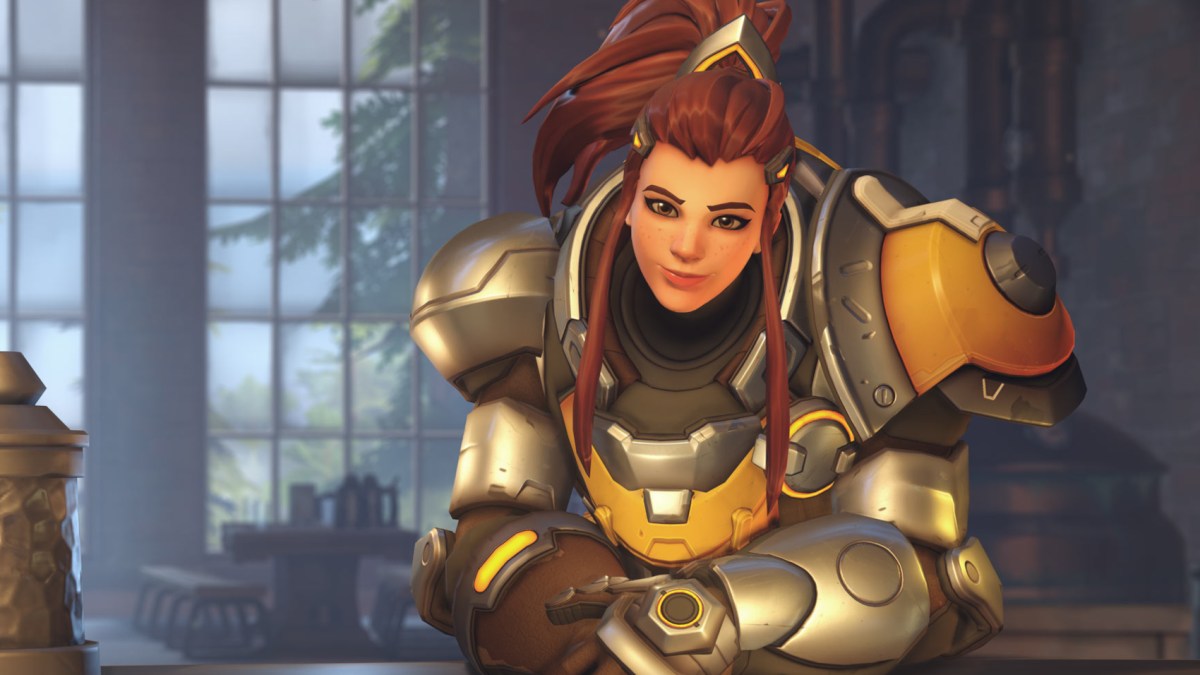
Everyone’s favorite Swedish heroine, Brigitte is the definition of buff. Like her comrade Reinhardt, Brigitte is just as good with technology as she is with swinging a melee weapon, and she packs a powerful punch on the battlefield. Part healer and part crowd controller, she’s a powerful addition to the Overwatch roster and incredibly fun on the battlefield.
What makes Brigitte such an incredible Overwatch hero isn’t just her in-game abilities. It’s her character design. She’s incredibly strong, extremely competent with blacksmithing, and yet Overwatch avoids casting her as a butch. Instead, she’s right on the line between “futch” and “soft femme,” dancing between the two categories depending on what she’s doing. Yes, Brigitte proves that femme and femme-leaning women can be big, strong, and buff too. Turns out you don’t have to be a hard butch to be a strong lady.
Sojourn
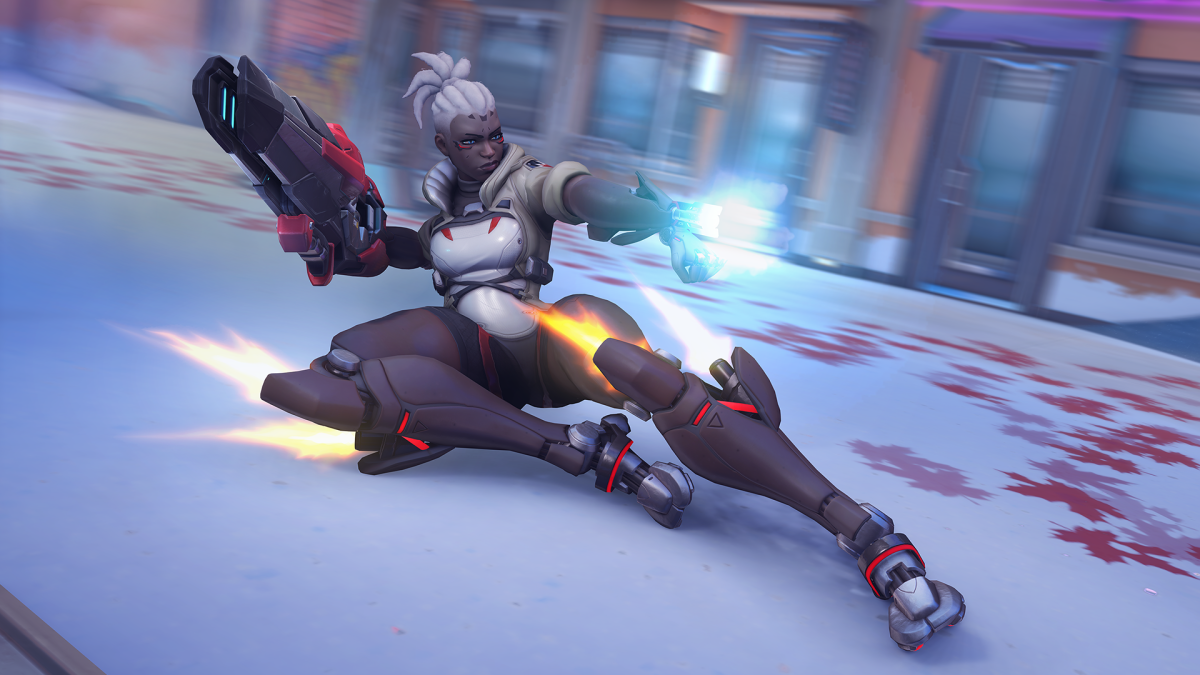
A versatile cybernetic with high damage output, Canadian-born Vivian “Soujourn” Chase is a newcomer in name only: In the series’ lore, she teamed up with Soldier 76 and Ana early on in the organization’s history, making her one of the longest-standing Overwatch members. In-game, her abilities mostly focus on high aim precision and versatile movement. Line up your shots correctly, and you can quickly do damage to some of the game’s squishiest heroes.
Sojourn is Overwatch’s first Black female hero, a long-awaited addition to the roster and a solid one at that. She’s an older and more experienced combatant, as hinted at by her white hair and serious demeanor. Her story is supposedly at the center of Overwatch 2’s main plot, and in PvP, she looks like one hell of a competitively viable multiplayer character.
But her introduction comes with many criticisms. Why wait until Overwatch 2 to finally represent Black women in the game’s playable roster? Why use Black women as a marketing tool instead of adding Sojourn into the original game, which is still live and still very popular? Not just that, Blizzard chose to reveal her origin story on the exact same day that California’s Activision Blizzard lawsuit was back in the news cycle.
Yes, it’s great to finally play as Sojourn, but the context around her introduction is painful and awkward, and yet another sign of how Activision Blizzard needs to change.
Widowmaker
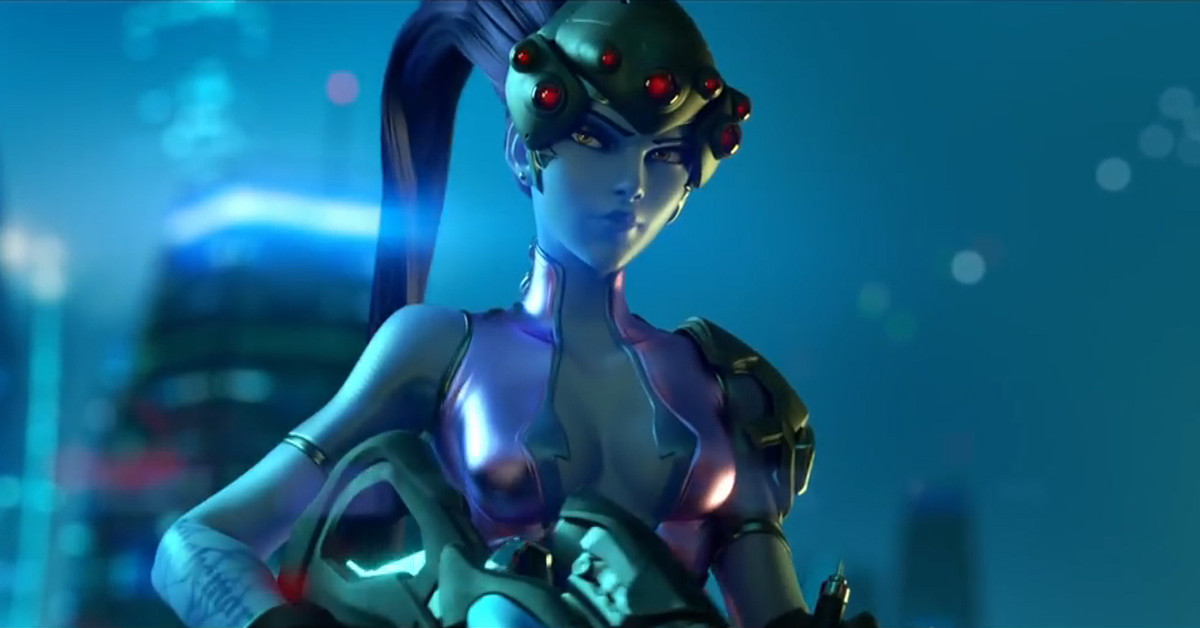
Overwatch’s iconic femme fatale wasn’t always an elite sniper. Years ago, she was called Amélie Lacroix, and she was married to Overwatch agent Gérard Lacroix. Amélie was eventually kidnapped by the elite, anti-Overwatch Talon organization and brainwashed to kill her lover, beginning her transformation into the blue-skinned Widowmaker. With a slowed heart that gives her pristine control over her sniper rifle and a cool, emotionless demeanor, she’s a woman to be feared on the battlefield and a crack shot in the right hands.
Years after Overwatch’s release, Widowmaker remains as mysterious as ever: Is Amélie still in there? Is Widowmaker a completely separate person? Are they one and the same? One holiday comic shows Widowmaker visiting her late husband’s grave, suggesting that, perhaps, Widowmaker and Amélie are one and the same. Nonetheless, Widowmaker is one of Overwatch’s best snipers, and her nimble, damage-oriented role on the battlefield makes her one of the fandom’s favorite damage-oriented characters to date. Plus, all the Widowtracerly polycule shipping is great stuff.
Moira
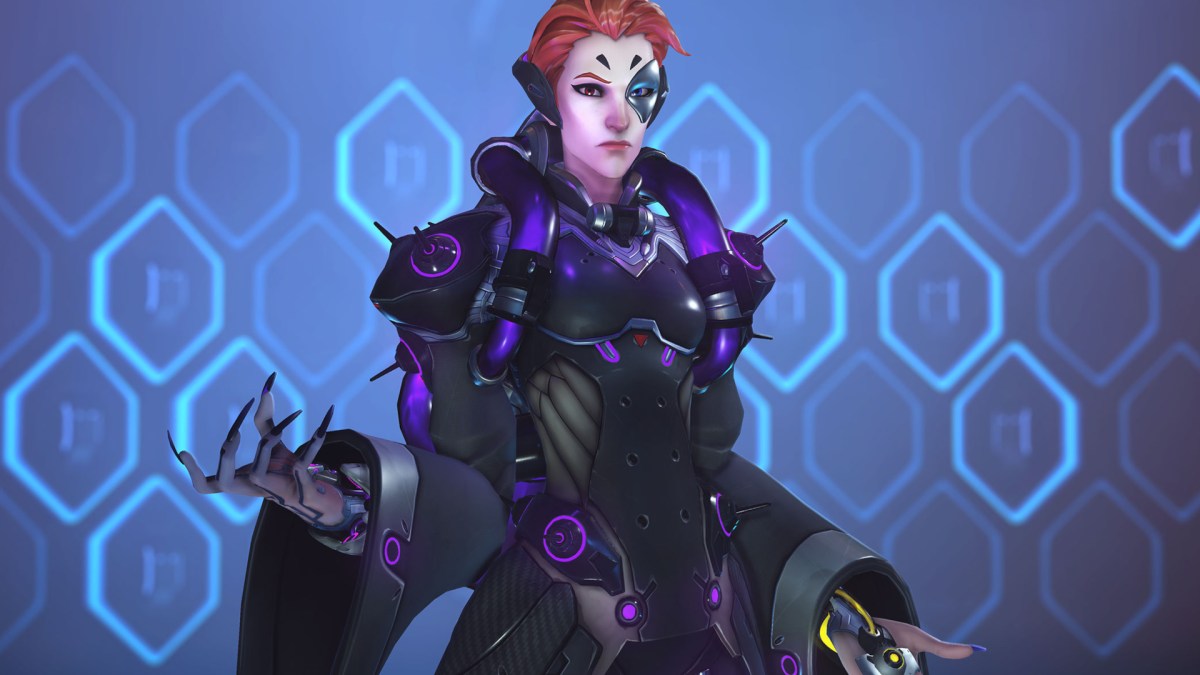
When Moira was first revealed in 2017, Overwatch fans knew there was something special about her. Moira is a powerful and highly controversial geneticist who, thanks to her research over the years, has developed the ability to both destroy and rebuild others’ molecular structure. A former member of the Overwatch organization’s covert team, most present-day members have ill feelings toward her. And yet, in the midst of battle, Moira can simultaneously deal extensive heals and incredible damage. She’s an offensive healer in every sense of the word.
Take one look at Moira, and it’s clear: This woman probably isn’t straight. She’s very butch, incredibly androgynous, and has that perfect level of queer-coded villainess energy that infiltrated so many of our favorite cartoons as baby gays. Is there something more to her butchy vibe? Overwatch lore hasn’t given us anything yet, although there are plenty of fan theories around her identity. Her transhumanism obsession definitely lends some trans women to think of her as trans, while others see her masculine aesthetic as, at the very least, a little les. Either way, she’s a sleek addition to the Overwatch universe, even if a little unethical.
Pharah
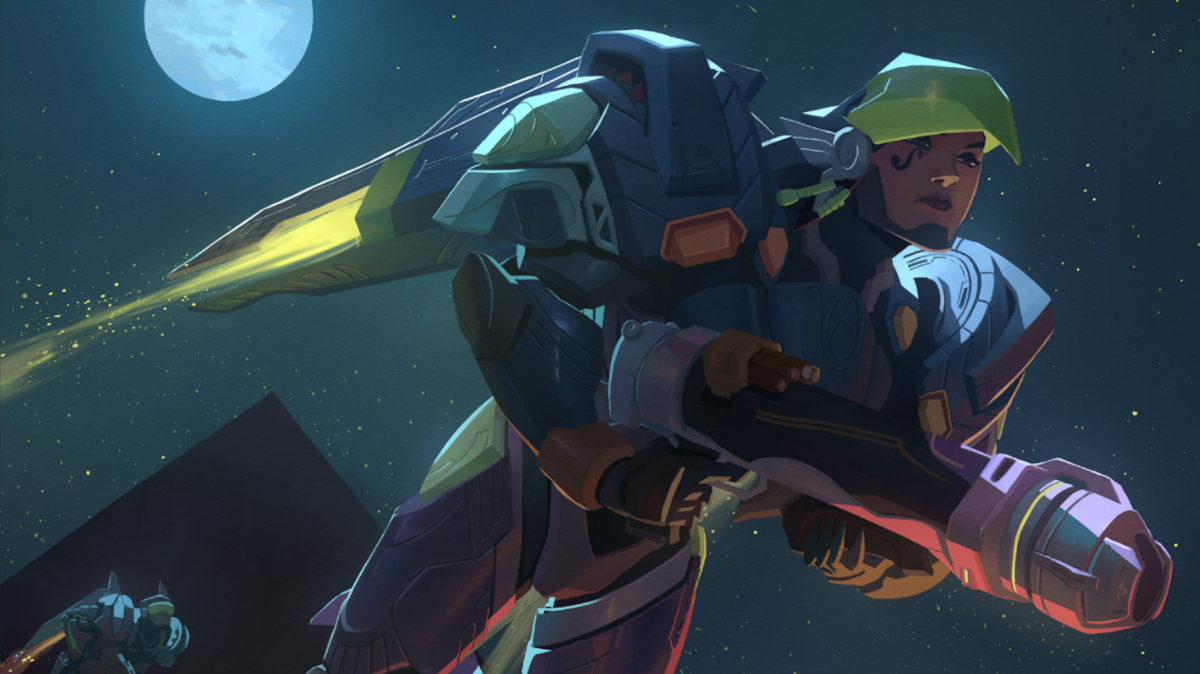
Most Overwatch characters have some allegiance to justice, but Pharah takes things to another level. Inspired by her mother Ana’s work with the Overwatch organization, Fareeha Amari tried her best to join the team, despite her mother’s desire for Fareeha to seek out a life elsewhere. Eventually, Pharah found her way to Overwatch, but not without some severe tension between herself and both of her parents. Underlying her story are themes of intergenerational conflict, duty, and coping with life’s twists and turns.
There’s so much love to about Pharah, between her ability to dominate the battlefield while maintaining aerial superiority or her strong sense of right and wrong. But it’s her relationship with Ana that really makes Pharah so memorable. As mother and daughter, the two fight alongside one another (and against each other, sometimes) in PvP. It’s still pretty rare for a multiplayer video game to show a serious glimpse into how motherhood and daughterhood change as we too grow older.
Mercy
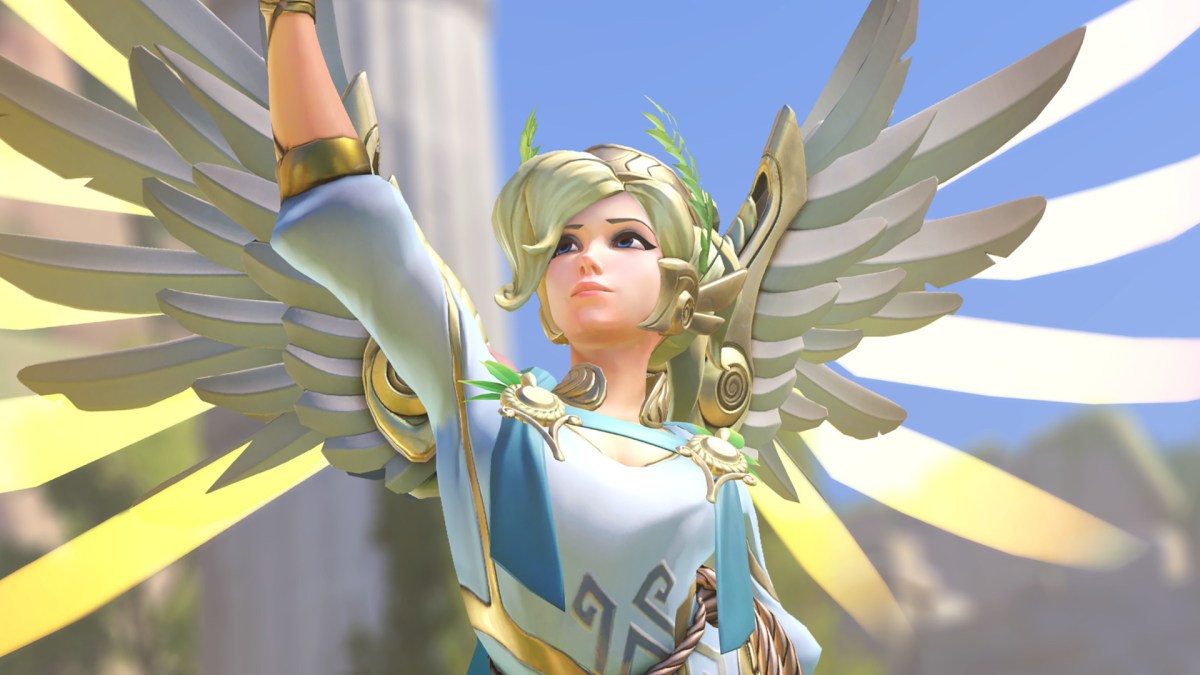
Mercy is old. Far older than Overwatch would have you to believe. But her healing, benevolent nature is restorative. Quite literally: Mercy has advanced healing technology that’s reversed her aging process, so she looks permanently young. This is something that Mercy and fellow long-time Overwatch organization member Ana discuss on the battlefield, posing an interesting philosophical question about whether it’s worth fighting time or accepting it.
Nonetheless, Mercy is one incredible healer, always to the rescue when needed. And she has her moments when she becomes protective of her teammates, pulling out her pistol and dealing damage to fend off her foes. She’s the perfect dialectical truth that, sometimes, doing harm is necessary to heal.
For years, the fandom has kept alive the hope that Mercy might be a queer woman, given her in-game synergy with the aforementioned Pharah. She can jump up to Pharah’s heights and hover the battlefield as Fareeha does damage. As a result, Pharmercy was Overwatch’s very first ship, and while there’s no canon lore to point to it quite yet, well, the synergy is still alive in Overwatch 2. Let’s hope the chemistry shows up too.
Sombra
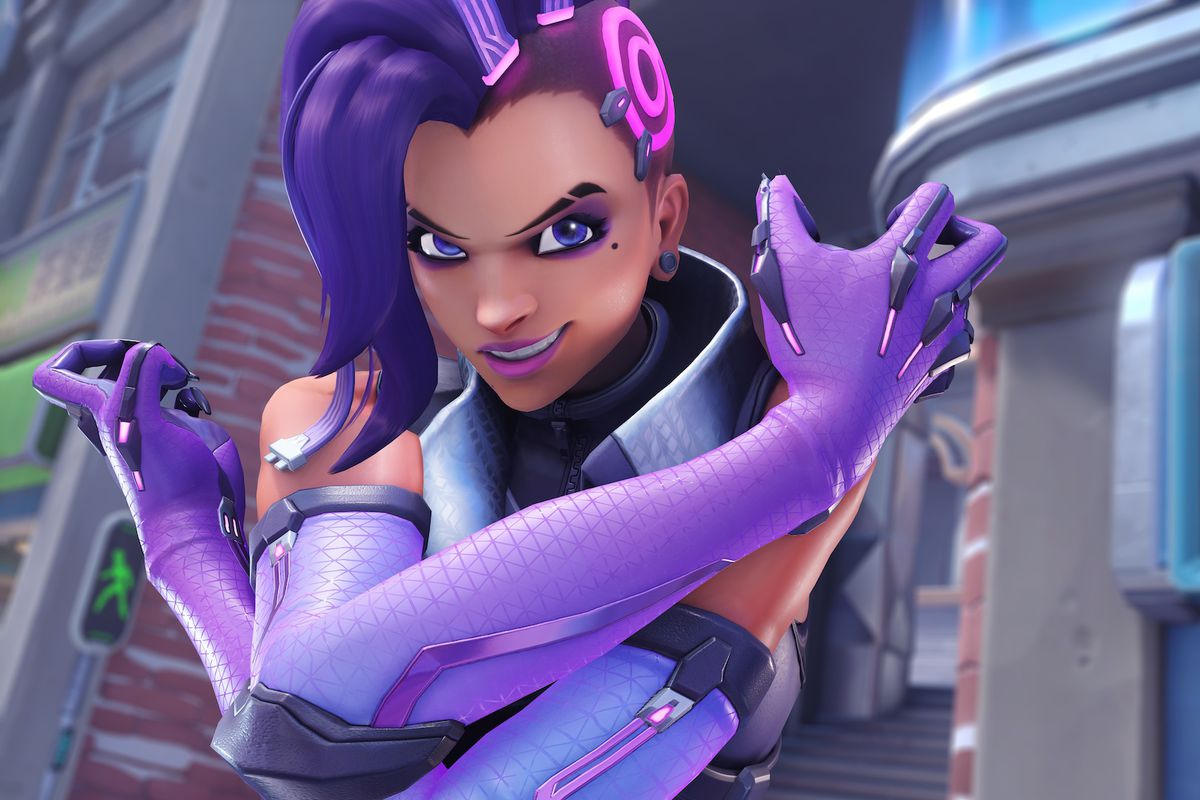
Before Overwatch’s roster expanded to its enormous contemporary number, Sombra was one of the shooter’s first DLC characters. And goodness, did she change everything.
A Mexican hacker who grew up in the wake of the apocalyptic robotic Omnic Crisis, Sombra vowed to take on the world’s biggest secrets after the conflict destroyed her country and left the corrupt in charge. Highly competent, incredibly determined, and always on the move, Sombra can hack her opponents and shut down their special abilities in combat thanks to her special cybernetic capabilities.
While pretty much all of Overwatch’s female characters are slick badasses, Sombra takes things one step further with her “hack-the-planet” mantra. For any techy woman that grew up looking for cool anti-establishments hackers in media, Sombra feels like home. She’s a difficult hero to control on the battlefield, but there’s nothing quite like hacking Tracer and finishing her off in combat before she can heal.
Tracer
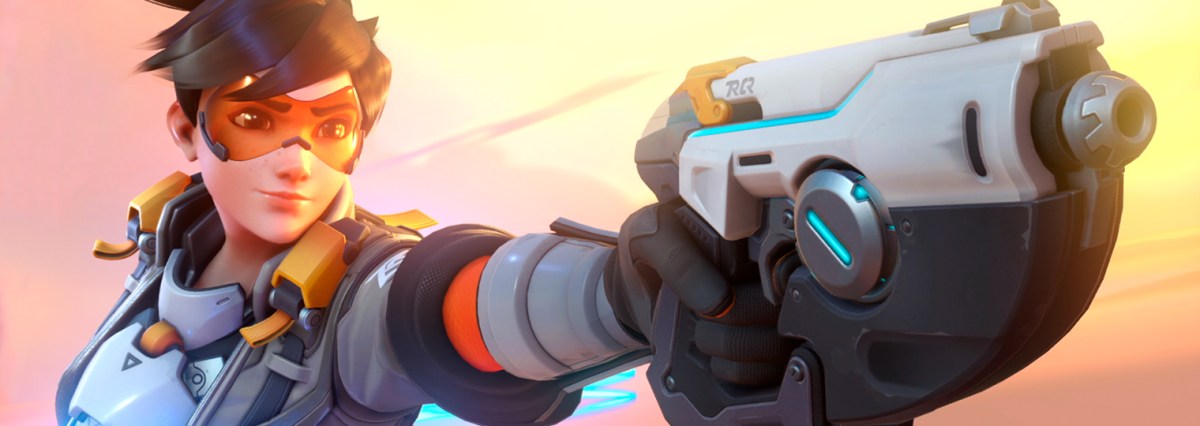
Ask any queer woman who plays Overwatch what her favorite female characters are, and you’re bound to hear Tracer pop up. Tracer isn’t just the game’s de facto mascot, she’s also Overwatch’s first canonical LGBTQ character. Yes, in a Christmas comic from 2016, Blizzard revealed that Tracer is a lesbian in a relationship with another woman, Emily. Her girlfriend even appears as one of the game’s sprays.
Despite a significant nerf to Tracer’s damage output in the Overwatch 2 PvP beta, Tracer is still one of the best DPS heroes in the game. She’s a fan-favorite, a queer woman whose queerness weaves in and out of the game’s lore without feeling like it’s trying to pander to a completely incomprehensible demographic. Overwatch wouldn’t be Overwatch without her, and six years later, she’s still a great example of lesbian representation in gaming.
D.Va

Tracer may be Overwatch’s cheery, jubilant mascot, but if there’s one character that reflects the game’s female playerbase, it’s D.Va. Hana Song, a 19-year-old Korean esports player, turned from professional gamer to anti-omnic mech defense pilot to protect South Korea. While D.Va has a cheery, playful, and strongly competitive public persona as a global icon and beloved celebrity, she doesn’t let her fame go to her head. She’s as level-headed as they come and willing to do anything to protect her fellow MEKA pilots.
D.Va is one of Overwatch’s most powerful tanks. Providing a mix of damage absorption and DPS output, she’s an easy pick on offense and defense alike. But it’s D.Va’s multifaceted personality — part guardian, part, well, diva — that really makes this esports star such a memorable figure for women in games.
Ana
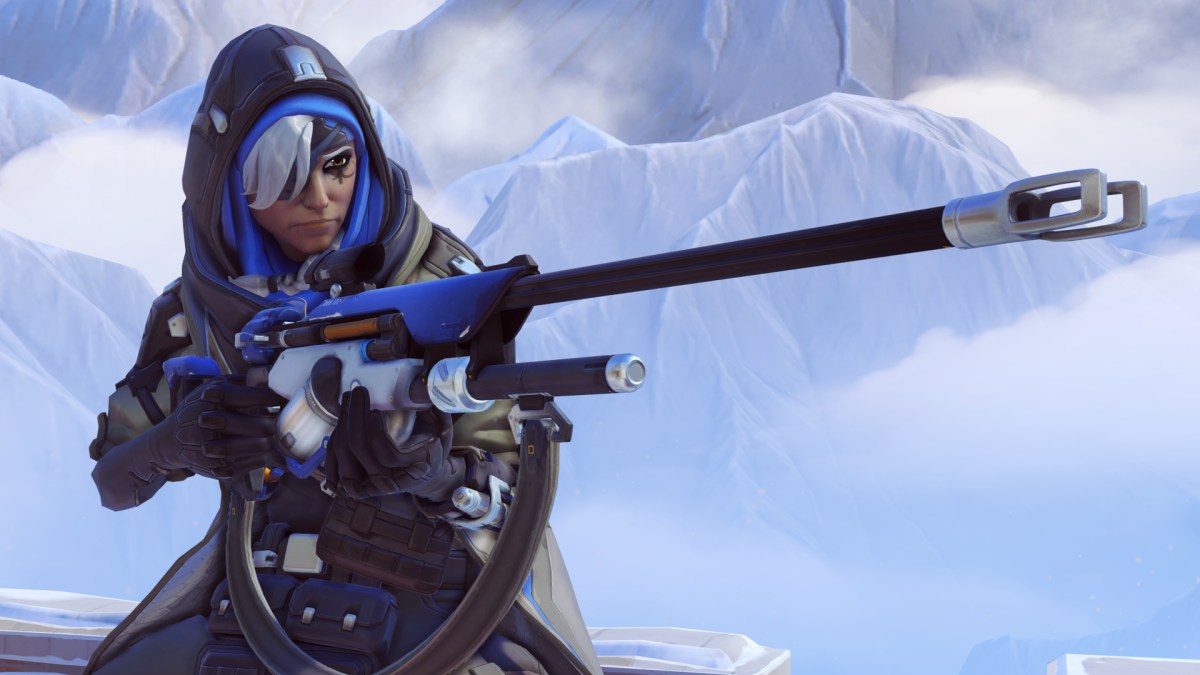
Where to start with Ana?
In an industry obsessed with creating playable female characters that are young eyecandy with hourglass figures (something that even Overwatch struggles with), Ana is the opposite of everything we’ve come to see in conventional female video game characters. Her power lies in many things: She’s older, mature, and battle-hardened. There’s her skills as a sniper and healer, her leadership as a former Overwatch commander, her ability to support her team and yet finish a job alone. And yet, Ana is no soldier without a home. Her motherhood is key to her story; her relationship with her daughter, Pharah, is complicated, with tinges of both pride and regret that should feel familiar to any mother of adult children.
Ana is certainly beautiful, of course, and Overwatch emphasizes this through her age, her wisdom, her elder femininity. But unlike so many women in games, her beauty comes through because of her life, because of the world she’s known, and the ways it’s changed her and her body. In a medium where players don’t have many older women to look up to, Ana is there, making her a fan-favorite for many female players, young to old.
(Featured image: Activision Blizzard, remix by Ana Valens)



